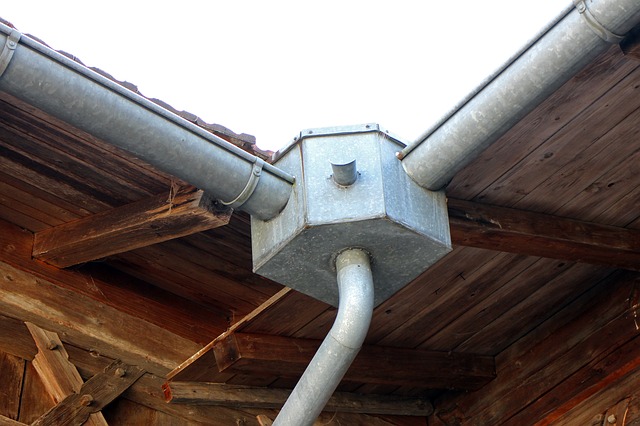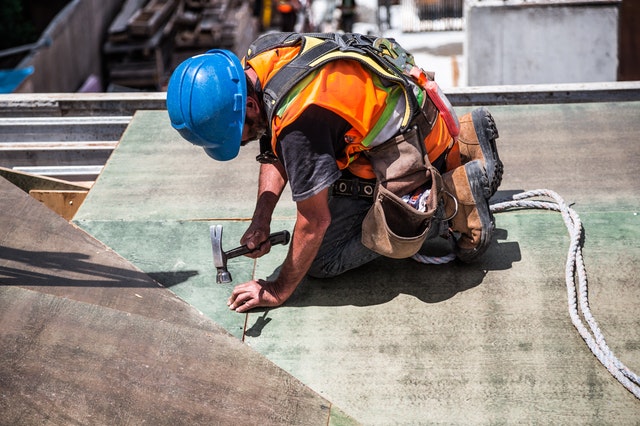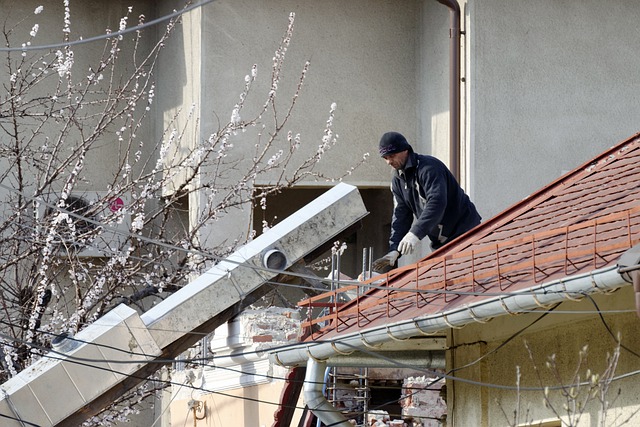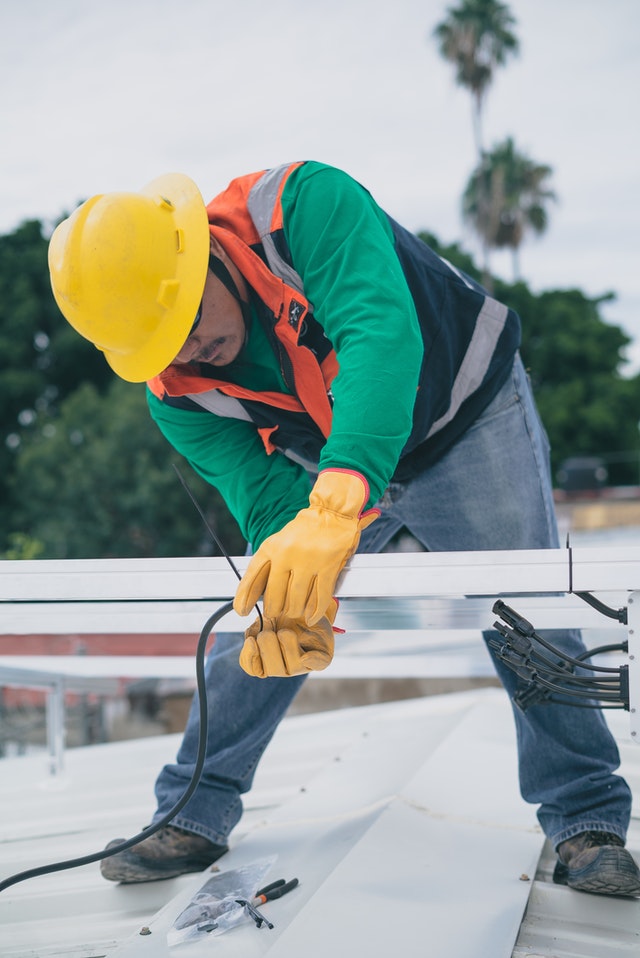Fascia and Soffit Repairs
Along the eaves you will often find fascia boards covering the ends of roof rafters as well as soffit boards (or sheets of plywood, aluminium, or vinyl) covering the underside of the eaves. A gutter usually is attached to the fascia (see for gutter repairs and installation).
Fascia boards can get soaked with rainwater if the drip-edge flashing is damaged or incorrectly installed or if the roofing itself fails. If this leads to rot, fascia boards need to be replaced. This does not call for special skills, but the work can be a bit messy. Be sure to work on a stable ladder or scaffolding and be careful not to lean too far to one side of the ladder while you work.
Replace old boards with pressure-treated 1x lumber or plywood. It doesn’t cost much more than untreated wood and it will help prevent rot.
Repairing fascia
- Remove an entire board or cut alongside a rafter with a reciprocating saw to remove the damaged portion of a board. Pry the fascia away using a flat pry bar and a hammer. Take care not to dent the soffit or other boards while you pry. You likely will need to pry out the bottom first, and then pry the board down from the roof. Pull out or pound in any exposed nails.
- If the board meets another board in the center of a rafter, you can attach the new board in the same way. For greater strength cut a short 2×6 or 2×4 and install it alongside the rafter to provide more nailing surface. Attach with deck screws.
- Check for further rot and replace the drip edge if needed. Near the top of where the replacement board will go, attach a taut string to use as a guide for straightness. Cut a new fascia piece to fit. Tap it up into position (if it is long have a helper hold the other end) and attach it to the rafter ends with nails or screws.
You choose a scarf joint?
A scarf joint is a good idea if the fascia is highly visible, and you may need to match an existing scarf joint. This is typically done by cutting the board at a 45-degree bevel, but 22 ½-degree bevels are also use. Cut a scrap piece to make sure the angle is right. Drill pilot holes before driving nails.
Dealing with rot in soffits, sheathing, and rafter ends
If the roofing or flashing has failed, more than just the fascia may be damaged. The roof sheathing, soffit boards, and even rafters may have rotted as well. After removing the fascia poke all the exposed wood with a screwdriver; if the tip sinks in easily, the board is rotted. If the rot on a board is only half an inch or so deep, it’s usually okay to leave the board in place. Dry the area out and replace any other boards and flashings as needed to keep the area dry. If several rafter ends are rotted, you may need to uniformly trim 2 inches or so from them. Work carefully so they will all be the same length and angle. Or install “sister” 2xboards alongside the rafters and attach the fascia and soffit to the sisters.
Soffit repairs
- If a portion of a soffit is damaged, draw a straight line alongside the framing nail heads will likely show you where ranking members are) and cut with a reciprocating saw or hand keyhole saw. Remove the entire board (which wills no longer than 8 feet if it is plywood).
- Pry out any molding covering the edges of the soffit board. Use a flat pry bar, then your hands, to pull out the damaged board. Inspect the exposed boards for further rot.
- Use the old piece as a template for cutting a new piece. You may choose to add soffit vents at this time. Attach the new soffit piece with screws or nails and replace any moldings.
Gutter Repairs
For a gutter system to efficiently f carry water away, it must be free of holes or loose joints, sloped at all points toward the downspouts, and clear of debris (usually leaves) that can slow the flow and clog downspouts.
Regularly clean out your gutters using a small trowel, a special plastic gutter cleaning tool, or a gloved hand. Cut back branches that drop leaves and twigs onto the roof. Install gutter guards.
When inspecting gutter up close, check for rotted fascia boards or sheathing and make repairs. Also make sure the drip-edge flashing is properly installed, so rain flows into the gutter and not onto the fascia or the edge of the sheathing.
Vinyl gutters are reliable, though the joints may come loose. Galvanized steel gutters will rust in time and need to be patched or have sections replaced. Aluminium gutters are rustproof but easily dented.
A gutter may be attached using brackets, spikes, or a strap. Each type can loosen, especially if the fascia rots. All attachment parts can be easily replaced.
Work on a stable ladder or scaffolding and avoid leaning far over while working.
Unclogging Downspouts
If water runs sluggishly or not at all through a downspout, try flushing it with a garden hose. If you need more pressure, seal the gap around the hose with a tightly stuffed rag.
If a hose doesn’t do the trick, try running a plumbing auger—either a hand-crank model or a power auger—down the downspout. The auger may push the obstruction through or it may pull debris back out. As a last resort dismantle the downspout and clear out the sections individually.
Stanley Pro Tip: Gutter Guards
Several manufacture offer gutter covers often claiming that their product is the only one that really works. There are two basic options. A screen guard (above) keeps out all large debris; some models are smooth ad sloped so the leaves can slide over the gutter. A solid cover (above right) has an opening at the front that allows only flowing water into the gutter. Whichever type you chose test by directing a hose onto the roof to be sure the water will flow into the gutter and not slip behind, where it can damage sheathing or fascia.
Patching A Hole
- For a sturdy repair cut a piece of metal flashing several inches wider and longer than the hole. Use a putty knife to bend it so it conforms to the shape of the gutter.
- Spread a generous coat of roofing cement onto the inside of the gutter and press the sheet metal into the cement. Cover the metal with more cement and feather the edges so that water can flow easily over it.
What If…
You use a patch kit?
Self-stick patching material is quick to apply but may not be a permanent solution. Brush the area free of dust and debris, then follow the manufacturer’s application instructions.
Sealing Joints And Caps
If the gutter drips at a downspout or joint, you may be able to simply seal the leak with gutter caulk. First check that the joint is firm and drive screws or rivets if needed. Apply a generous bead of caulk, then smooth the caulk with a wood shim or a balled-up, mineral spirit-dampened rag.




